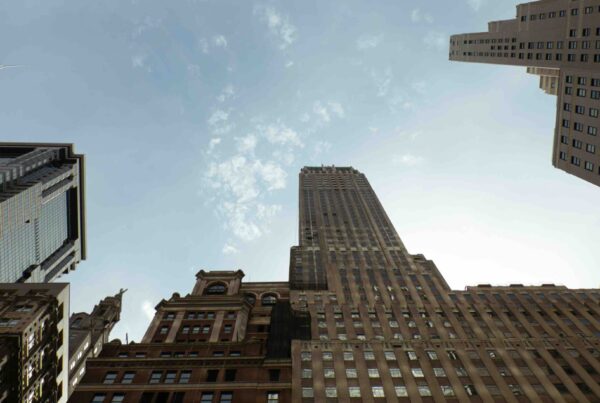Why 2018 Is a Multifamily Opportunity
2/27/2018
A few “macro” NYC Multifamily Investment trends are emerging this year. Based on feedback from both private clients and institutional capital sources, there is a consistency in positive messaging that needs to be shared.
Before that, however, I would like to address two negative factors impacting values: rising interest rates and property taxes. Rising rates will erode values and effectively be a “headwind” to the positive factors in the market. The same is true of property taxes. They are an item an owner has very little control over which immediately impacts values and a property’s equity. These are both big items, but there are several positive issues that can be highlighted.
1) Moving From “Unknown” to “Known” in Many Categories. 2018 starts off better than 2017 because we now have clarity in several areas which were previously question marks. These include living with a new president and administration for over a year, seeing how the financial and stock markets have performed, and being exposed to Trump’s nationalistic geo-political stance.
2) Tax Reform. Tax reform will create a positive boost for the economy, job creation, and rent growth, as well as provide some tax benefits for real estate owners. At least in the short term, the corporate tax cuts will infuse cash into the economy, which, when combined with the tight labor market, should initiate wage growth.
3) Rental Market. I have a contrarian opinion here. The rental market is soft today and has been for three years. In many markets, it is normal to find owners offering one to two months free. This is highly unusual in NYC. Eventually, this trend of declining rents and concessions will reverse. When concessions evaporate, it equates to a 16% increase in effective rents! If you have moderate rental growth over the next four years, looking back from 2022, rents in 2018 will look cheap.
4) Declining Velocity and Pricing. For two years, NYC has witnessed a five to ten percent decline in prices and consecutive years of 25% and 40% declines in the numbers of sales. These trends will eventually reverse, creating a buying opportunity. For now, the uncertainty which has hung like a cloud has a silver lining. It’s true the market has not experienced a volatile dip in pricing (like 2009), but a long-term buyer must ask: In any NYC 20-year period, how many consecutive years have multifamily prices declined? How many of those periods were looked back upon as buying opportunities?
5) Development Supply. The NYC development pipeline, which has contributed to the rental oversupply, particularly in the boroughs, dries up this year. In 2018, there are 22,448 units scheduled to be delivered almost evenly between Manhattan, Brooklyn, and Queens. However, in 2019, that number drops by 76% to approximately 5,000 units in all of New York City and stays that way until 2021. Furthermore, of the new deliveries, almost 60% of them are in four neighborhoods: Manhattan’s West Side, Greenpoint and Williamsburg, Downtown Brooklyn, and Long Island City. See the graphs below and above for more specific analysis.
6) Job Creation and Wage Growth. NYC has been consistently creating almost 3,000 high wage jobs a month for the past three years, and at increasingly higher levels each month (see graph). As discussed above regarding tax reform, job creation, wage growth, and inflation are intertwined, and after many many years of flat wages, we are starting to see wage growth and slight inflation. These are requirements for rental growth. In an inflationary world, rental housing is a great place to be.
This conversation gets more complicated when addressing properties that are highly rent stabilized, but there are mitigating factors in those assets as well. More interesting are opportunities with large amounts of free-market units in emerging neighborhoods. Although hard to find, they are out there and in what may be a sweet spot for rental growth ahead.
facebook LinkedIn Instagram Twitter




